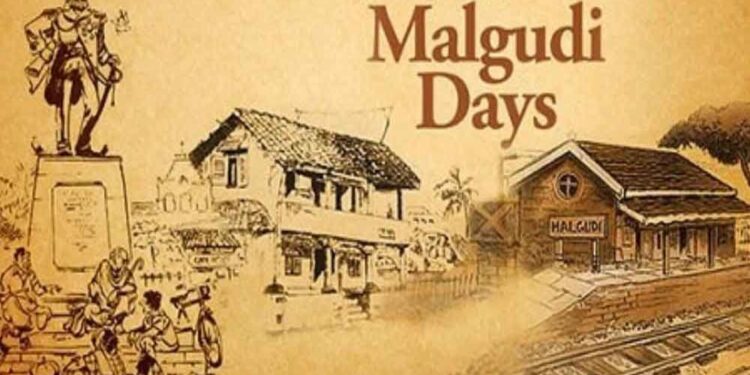What is the summary of the Malgudi Days
The center and soul of Narayan’s literary universe is the fictional town of Malgudi. Tucked away in the South Indian countryside, Malgudi serves as the canvas on which Narayan creates a vibrant tapestry of people, traditions, and commonplace events. The stories in “Malgudi Days” are both approachable and thought-provoking because of the special way they combine irony, comedy, and a profound grasp of human nature.
The collection’s exploration of universal themes like morality, love, ambition, and the search for meaning is what gives it its enduring appeal. Because of Narayan’s acute observation and narrative skill, readers are transported to a world where seemingly ordinary lives are illuminated with a touch of magic, making the ordinary extraordinary.
Malgudi days Summary
Malgudi Days is a collection of short stories by Indian author R.K. Narayan, first published in 1943. The stories are set in the fictional town of Malgudi and revolve around the everyday lives of its diverse inhabitants. The book captures the essence of small-town life in India, exploring the human condition through a variety of characters and situations. Here’s a detailed summary of “Malgudi Days”:
The collection opens with the story “An Astrologer’s Day,” introducing readers to the mysterious and itinerant astrologer who sets up his makeshift office on a busy street in Malgudi. The tale takes an unexpected turn when the astrologer encounters a stranger with a dark secret. This story sets the tone for the rest of the collection, blending elements of mystery, irony, and human nature.What is the summary of the Malgudi Days
In “Gateman’s Gift,” we meet the protagonist Ramanujam, a simple and honest gatekeeper at a railway crossing. His routine life takes an interesting turn when he receives an unexpected gift from a traveler. The story explores the themes of kindness and generosity in the most unexpected places.
Also Read-
- The adventure of the solitary cyclist Short Summary
- Wings of Fire Summary And Themes by Abdul Kalam
- The Emperor of Ice-Cream Poem Summary and Themes
The third story, “The Doctor’s Word,” follows the life of Dr. Raman, a respected physician in Malgudi. Dr. Raman is faced with a moral dilemma when he must decide whether to disclose a patient’s fatal illness to the patient himself. This story delves into the ethical complexities of medical practice and the challenges of delivering difficult news.What is the summary of the Malgudi Days
“Mother and Son” revolves around the relationship between a widowed mother, Shanta, and her adult son, Chandran. The narrative explores the tension between tradition and modernity as Chandran seeks to break free from his mother’s overprotective grasp and make his own decisions about his life.
One of the most poignant stories in the collection is “The Snake-Song,” which centers around the character of Shyama, a young girl who believes she can communicate with snakes. The story beautifully captures the innocence of childhood and the clash between imagination and reality.
“The Missing Mail” introduces us to Pitchaimoni, a letter-writer in Malgudi who helps illiterate people compose letters. The story unfolds when a letter goes missing, leading to a series of comical and chaotic events. This narrative highlights the importance of communication and the impact of seemingly minor incidents on people’s lives.
In “The Gold Belt,” readers encounter the eccentric character of Raju, a man obsessed with finding hidden treasure. The story explores themes of greed and the pursuit of wealth, and it serves as a cautionary tale about the consequences of unchecked desires.
The narrative takes a humorous turn in “The Blind Dog,” which revolves around the misadventures of a blind dog in Malgudi. The story is a delightful exploration of the quirks and idiosyncrasies of the town’s residents, showcasing Narayan’s keen observational skills and wit.
“Engine Trouble” introduces readers to Margayya, a man with a passion for finance and investment. Margayya’s journey to financial success is marked by clever schemes and resourcefulness, but it also raises questions about the morality of his actions and the impact of financial pursuits on personal relationships.
The collection concludes with “The Edge,” a poignant and introspective story about a man named Govind Singh. Facing the inevitability of death, Govind Singh reflects on his life, relationships, and the pursuit of meaning. The story explores themes of mortality and the search for purpose in the face of life’s uncertainties.
















